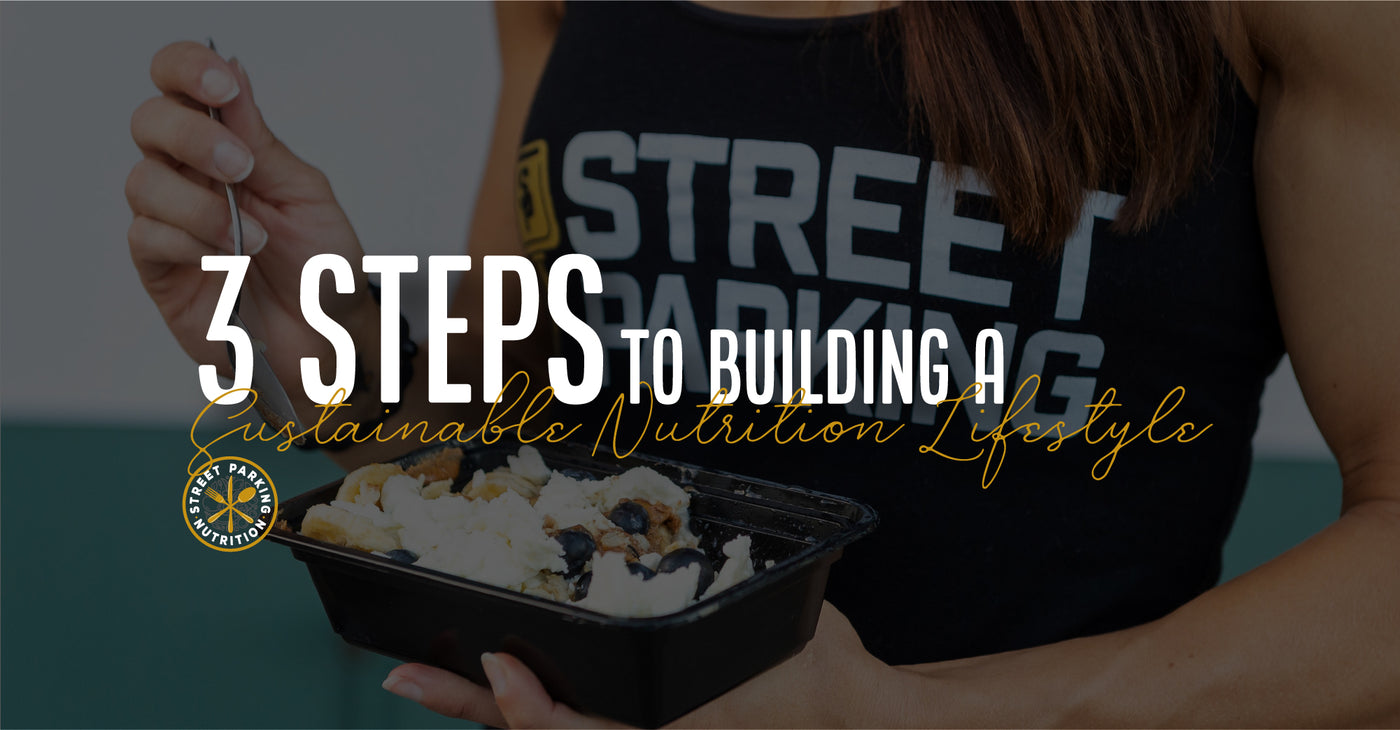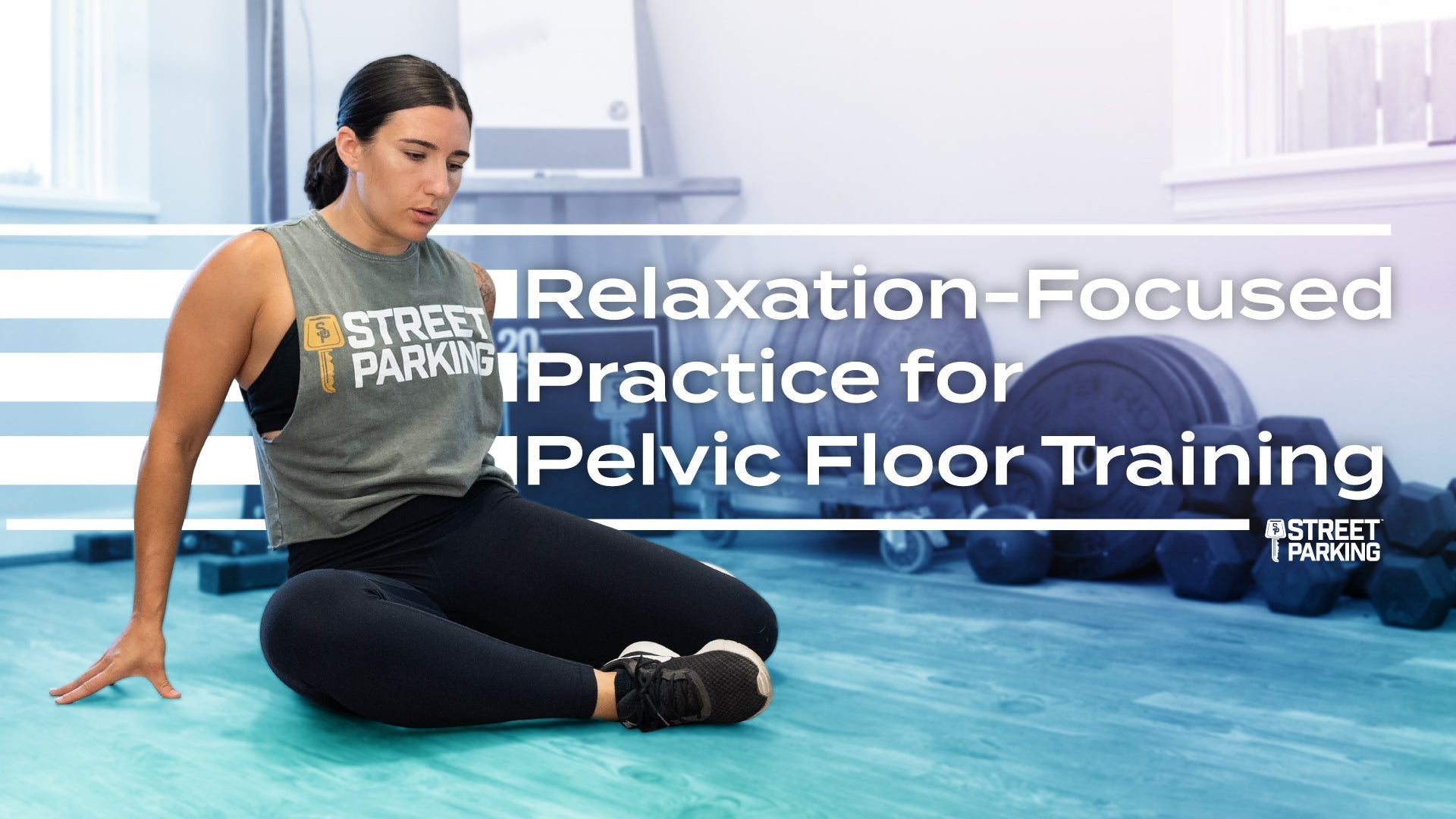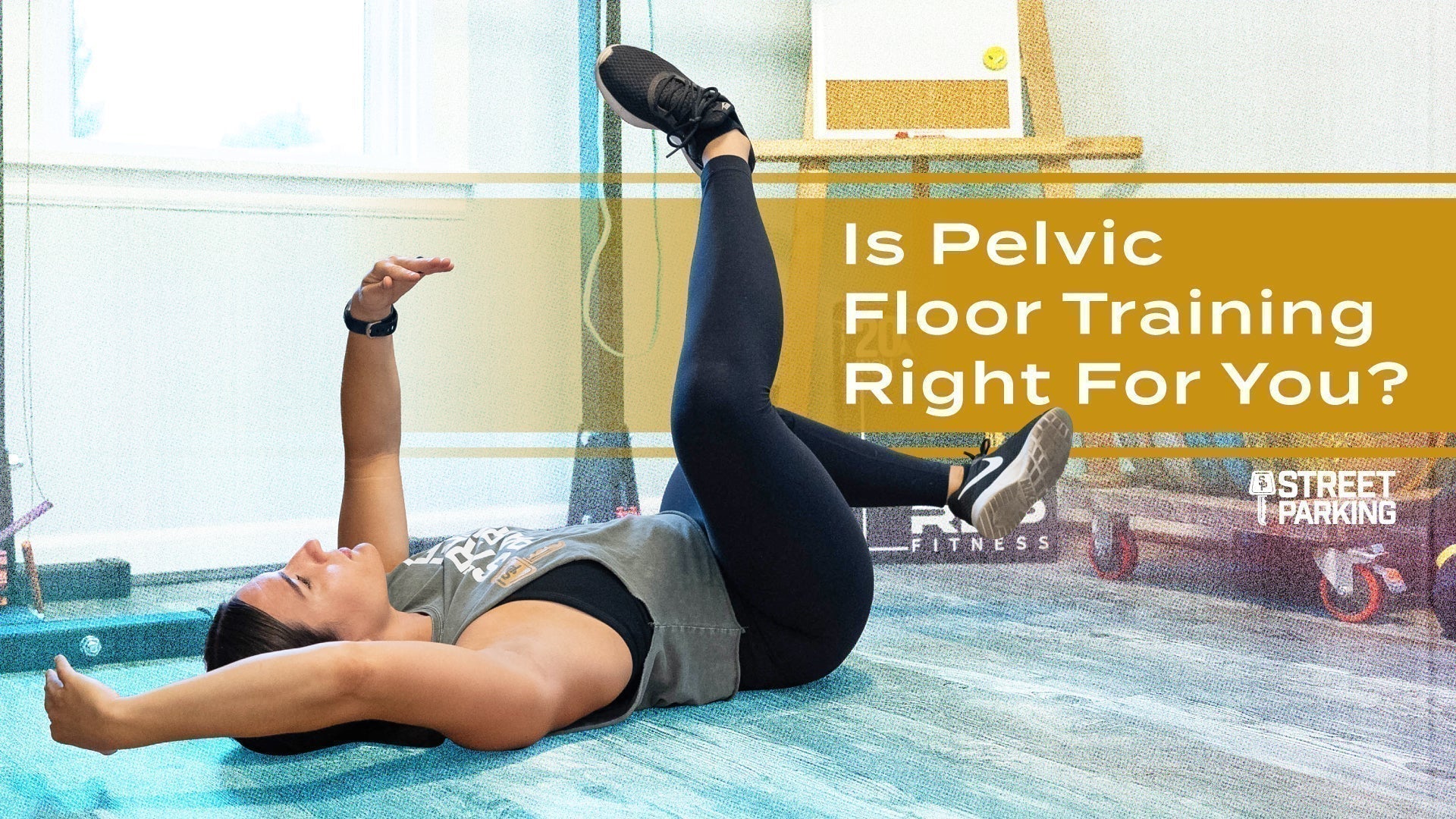
When we decide that we’re ready to make a change in our life (no matter what it is), that decision typically comes with a feeling of momentum -- a desire to go from 0 to 100.
Oftentimes when we’re ready to dial in on our nutrition, we get into the zone of “let’s throw everything in our kitchen away and start from scratch” or, “Let’s do this 30 day challenge that forces me to eat a bunch of foods I’ve never eaten in my life.” Initially it’s exciting and we may even see instant changes in how we feel or perform, but we quickly realize that we’re highly overwhelmed or can’t sustain this new habit long term. Diving into the deep end and trying to change too many factors all at the same time will most likely lead to us giving up and digressing back to what we were doing before.
At Street Parking, every change we make needs to be something we can sustain long term, so when it comes to making changes with our nutrition, we like to slowly implement small changes until they become a habit, and then one by one, we will add more to our plate.
The best way to do that is to break everything down into progressions.
1. Food Quality
Before we progress into figuring out your calories or what time of the day you should be eating carbs, we need to first pay attention to what kinds of foods you’re eating and make small changes over time that increase the actual quality of the foods going into your mouth.
Again, one approach to this that would most likely result in you quitting would be to go through your kitchen, throw out all of the condiments, chips, frozen waffles, etc., and then replace your entire kitchen with “organic only” foods that you’ve never eaten before. For most of us, that’d be a really overwhelming change and we just wouldn’t be able to sustain those changes.
Instead of taking that route, let’s start with a manageable process. The goal is to cut out the crap (especially highly processed foods and added sugar) but we need to start from a place that will work for us and that’s going to look a bit different for every single one of us. Here are some general ideas:
- Go from eating no vegetables to implementing one vegetable into one of your meals everyday
- Go from 2 packets of sugar and heavy cream in your morning coffee to 1 packet of sugar and ½ the amount of heavy cream in your morning coffee
- Swap out the late night chip binge for a bowl of rice and meat
- Switch out the morning bagel with cream cheese with 2 scrambled eggs and a piece of toast
- Commit to increasing the quality of ONE of your meals until it becomes a habit. Don’t worry about the other meals if that seems overwhelming. Nail down a routine and quality food options for that one meal
Focusing on swapping out highly processed foods and building up a solid list of quality foods that you enjoy eating for breakfast, lunch, dinner and snacks is a great first step into building up a nutrition foundation that will be sustainable for you long term. Remember: The overall process will take time but even just learning to eat a quality breakfast everyday over the next 12 months can make a big difference in your energy levels and how you feel throughout the day. Your small changes will eventually turn into big changes.
2. Balancing your Plate
There are three types of macronutrients that we as humans need to be consuming on a regular basis:
- Proteins
- Carbohydrates
- Fats
Over time our goal should be to consume a combination of all three macronutrients together at each meal as they manage our insulin, blood sugar and create a balance for our body and energy throughout the day.
If we eat an unbalanced ratio of macronutrients or eat sporadically throughout the day, it can cause us to have peaks and drops in our energy levels.
A balanced plate and properly spaced meals will balance our energy and decrease those spikes.
A few general ideas on how to balance your meals:
- Breakfast: Eggs, sweet potato and avocado
- Lunch or Dinner: Ground turkey (cooked in olive oil), jasmine rice, vegetable
3. Palm Method Measurements
After you’ve become consistent with eating quality foods and balancing your meals, a great next step is to take a closer look at how much you’re eating. While we know there are multiple ways to measure your food, we have found that the palm method is a very effective way to measure your food without needing a scale or measuring cups. You may not always have the ability to whip out your food scale, but you’ll always have access to your hand.
This measurement system closely mimics some of the most popular eating methods (macros, zone, etc.) and has been tested to provide almost identical portion sizes without complicated apps and measuring.
Here are some simple and effective ways to measure your food by utilizing your palm:
- Your palm determines your protein portion
- Your fist determines your veggies portion
- Your cupped hand determines your carb/starch portion
- Your thumb determines your fat portion
We go further into detail on the palm measuring method and provide additional guidance to our active members inside the Street Parking community.
Again, these 3 steps are going to take time and that timeline is going to look different for everyone. Be patient with yourself and allow yourself the appropriate amount of time to actually turn these steps into a routine.
Once these 3 steps have become a part of your routine and lifestyle, your next option would be to take it a level deeper by purchasing a Street Parking nutrition template.
Interested in learning more about what’s inside our nutrition templates and how they work? CLICK HERE.


